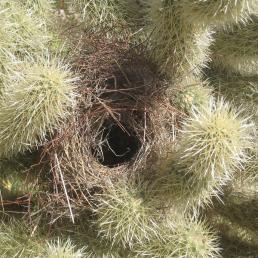

Join BirdNote tomorrow, November 30th!
Illustrator David Sibley and actor H. Jon Benjamin will face off in the bird illustration battle of the century during BirdNote's Year-end Celebration and Auction!
Saskatchewan’s Grasslands National Park, just a few miles north of the Canada/US border... To be heard over the loud winds, birds like this Chestnut-collared Longspur need to have a wide dynamic range. But even with their many adaptations, bird songs are most plentiful when the wind is the calmest. Listen to more at BirdNote.org/SoundEscapes.
This show is made possible by Jim and Birte Falconer of Seattle, the Bobolink Foundation, Idie Ulsh, and the Horizons Foundation.
BirdNote®
Sound Escapes - Our Listening Guide
Written by Mark Bramhill
This is BirdNote.
[WIND ON PRAIRIE]
We’re in Saskatchewan’s Grasslands National Park, just a few miles north of the Canada/US border. Gordon Hempton - a lifelong nature recordist - is our listening guide today:
GH: Prairie areas // are vulnerable to wind. And the presence or absence of wind // shapes the way bird song sounds.
To be heard over the loud winds, birds need to have a wide dynamic range.
GH: So soft then loud, then soft then loud. Very fast. And also frequency modulation. // that means they’re going to be very songful.
But even with these adaptations, their songs are most plentiful when the wind is the calmest:
GH: Very early morning when the light is just beginning to turn a little milky on the eastern horizon // and the stars begin to disappear. The air is the calmest. The opportunity to sing is most efficient and all-prevailing. // As the light begins to get a little bit brighter on the horizon, things really come alive.
[BIRDS AT DAWN]
You’re listening to a sneak preview of Sound Escapes, a special podcast production from BirdNote. You can hear the full half-hour of Grasslands National Park - and other episodes of the show - at our website, BirdNote.org/soundescapes
For BirdNote, I’m Ashley Ahearn.
This show is made possible by Jim and Birte Falconer of Seattle, the Bobolink Foundation, Idie Ulsh, and the Horizons Foundation.
###
Bird sounds provided by Gordon Hempton
BirdNote’s theme composed and played by Nancy Rumbel and John Kessler.
Producer: John Kessler; Managing Producer: Jason Saul; Editor: Ashley Ahearn; Associate Producer: Ellen Blackstone; Assistant Producer: Mark Bramhill.
© 2019 Tune In to Nature.org April 2019 Narrator: Ashley Ahearn
ID# hemptong-SE-Saskatchewan-01-2019-04-19 hemptong-SE-Saskatchewan-01





